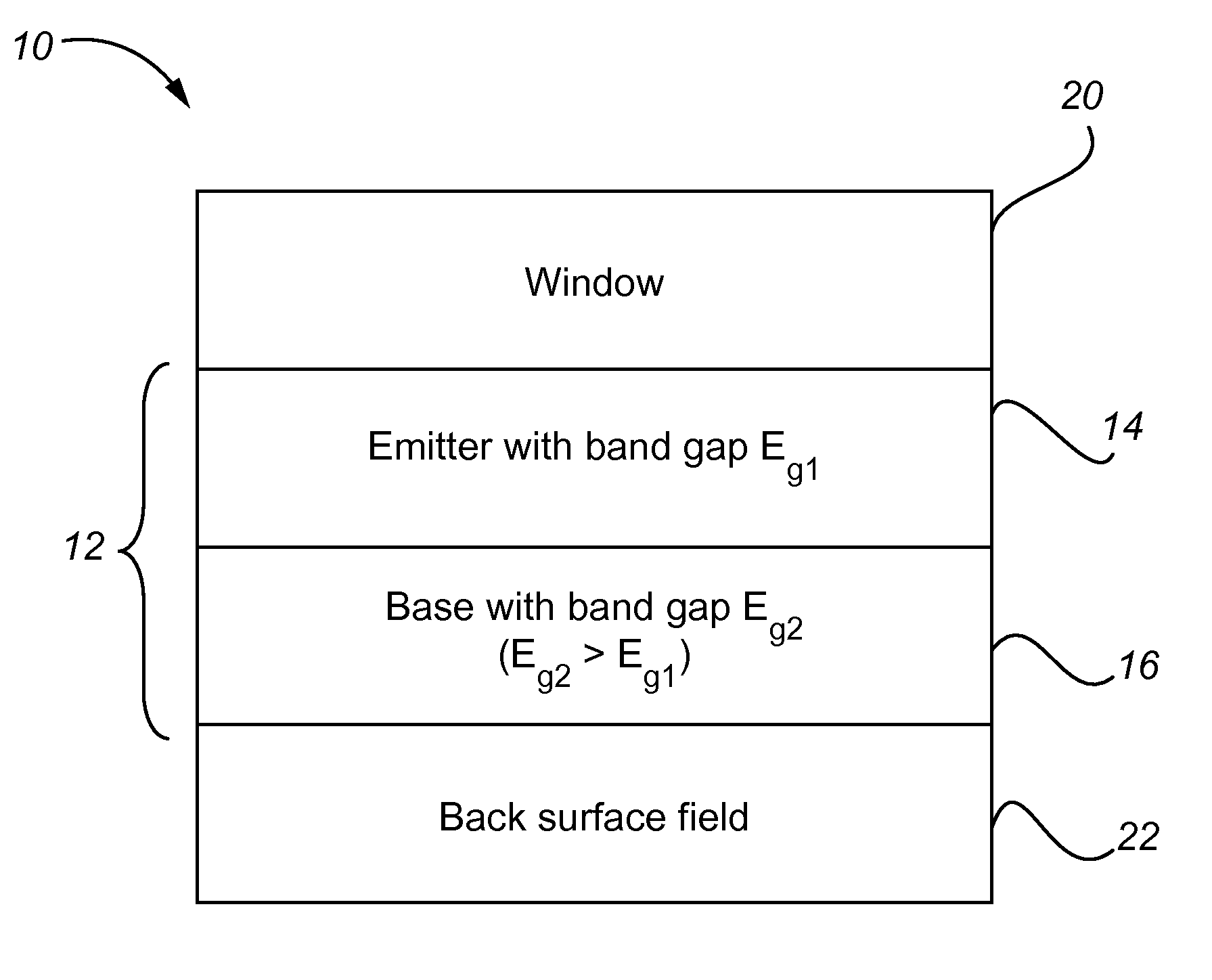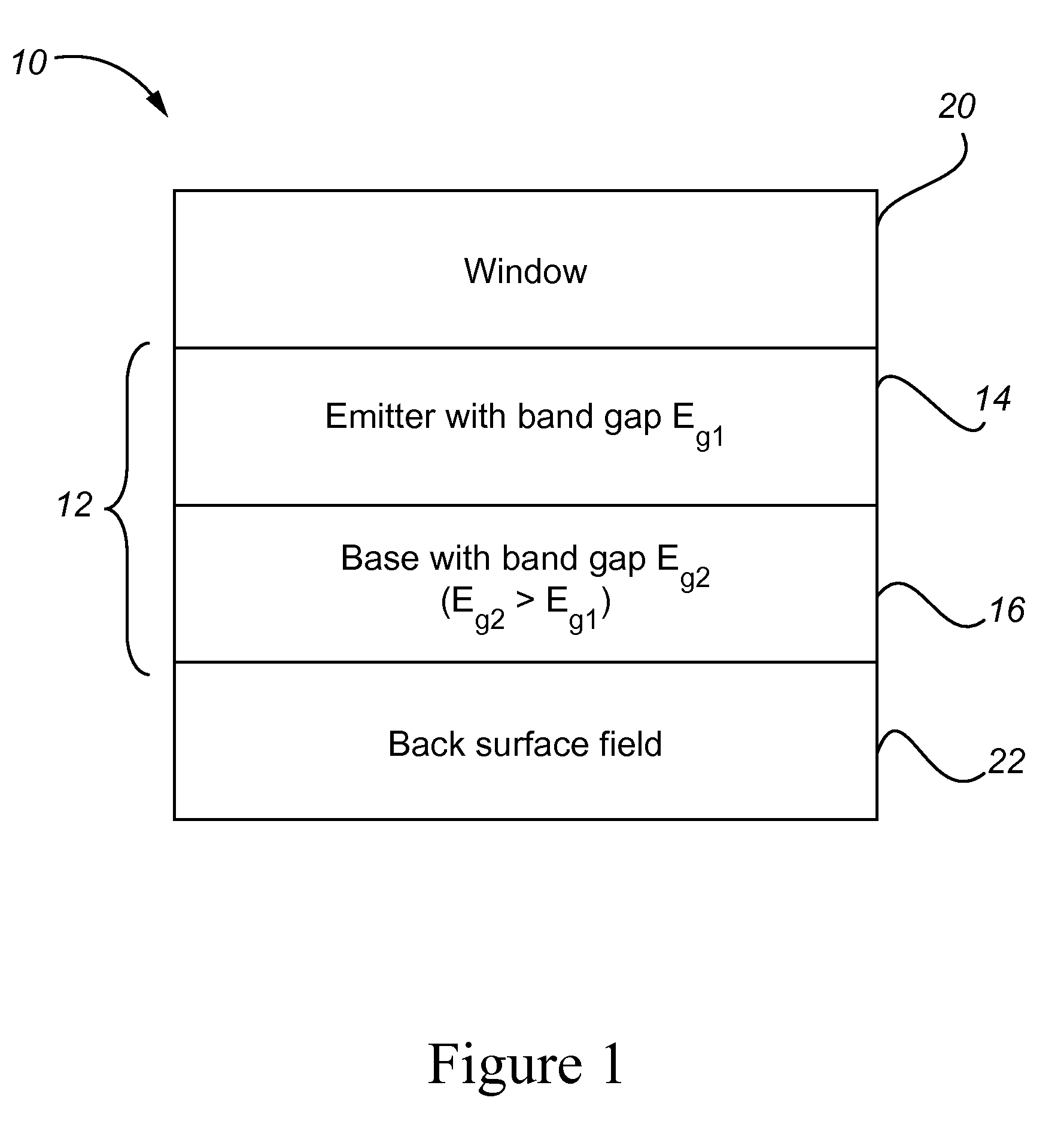Reverse heterojunctions for solar cells
a solar cell and heterojunction technology, applied in the field of photovoltaic solar cells, can solve the problems of reducing the diffusion length of minority carriers, the design of three junction solar cells is rapidly approaching the practical efficiency limit, etc., and achieves the effect of reducing the sheet resistance of emitters, increasing subcell current, and minimal effect on open-circuit voltag
- Summary
- Abstract
- Description
- Claims
- Application Information
AI Technical Summary
Benefits of technology
Problems solved by technology
Method used
Image
Examples
Embodiment Construction
[0024]The invention discloses a reverse heterojunction for use as an emitter-base pair in a solar cell. In one embodiment as shown in FIG. 1, a reverse heterojunction 12 comprises an emitter 14 and base 16 of a subcell 10 of a solar cell with one or more subcells. This subcell 10 includes a window 20 and includes a back surface field 22. In one preferred embodiment, this subcell 10 is the top subcell of a solar cell. The disclosed heterojunction is named a “reverse heterojunction” because it comprises an emitter and base where the band gap of the emitter (Eg1) is at least 10 meV lower than the band gap of the base (Eg2), and preferably not more than 150 meV lower than the band gap of the base. This is counter to the teaching of the prior art, which specifies that the emitter should have the same band gap as the base, as in a homojunction design, or a higher band gap than that of the base. The particular design having an emitter with a higher band gap than that of the base is a heter...
PUM
 Login to View More
Login to View More Abstract
Description
Claims
Application Information
 Login to View More
Login to View More - R&D
- Intellectual Property
- Life Sciences
- Materials
- Tech Scout
- Unparalleled Data Quality
- Higher Quality Content
- 60% Fewer Hallucinations
Browse by: Latest US Patents, China's latest patents, Technical Efficacy Thesaurus, Application Domain, Technology Topic, Popular Technical Reports.
© 2025 PatSnap. All rights reserved.Legal|Privacy policy|Modern Slavery Act Transparency Statement|Sitemap|About US| Contact US: help@patsnap.com



